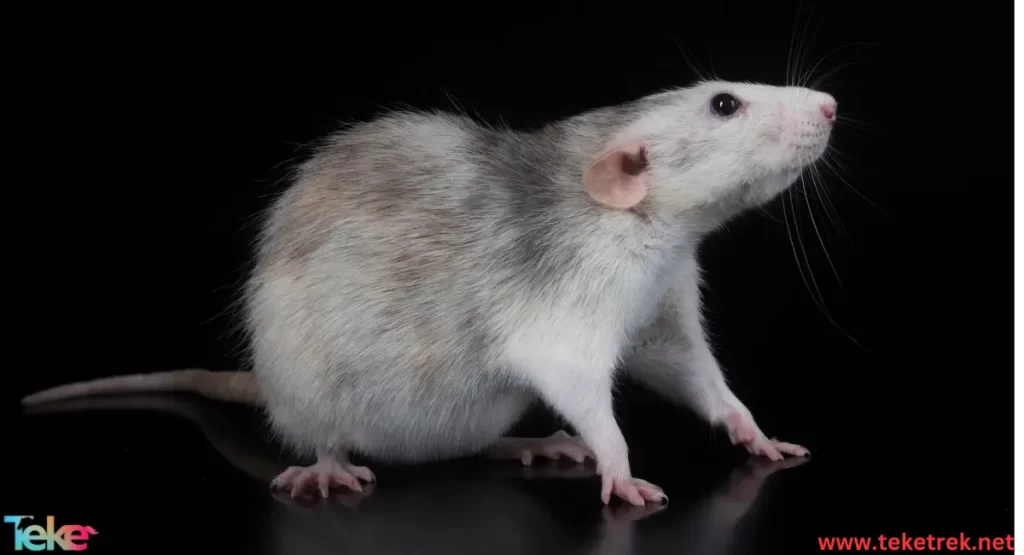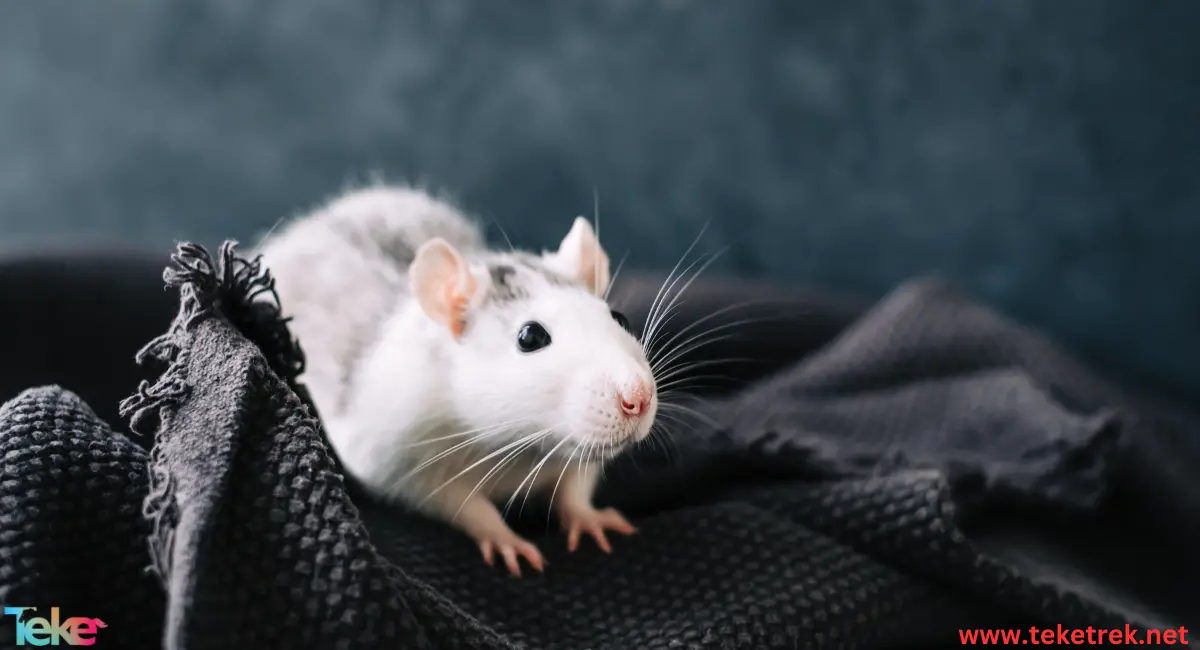Despite their intelligence, rats are among the most worrisome creatures for humans. We typically associate them as disease carriers, which gives them a bad reputation. However, what we may not know about rats is that they are highly intelligent beings, capable of achieving their goals in ways that can be astonishing. Yet, they remain one of the most troublesome creatures for humans.
Let’s learn more about it from teketrek.

Information about Rats:
Rats belong to the genus Rattus, are medium-sized and long-tailed.
Rats are mammals that resemble mice, but all rat species are generally larger than mice.
Rats can be brown, gray, or black, but generally, rats tend to have darker colors.
Additionally, their eyes and ears appear small compared to their bodies.
Rats are considered one of the most frightening rodents, as they are notorious for causing harm and destruction. They gnaw on anything from walls to pipes to electrical wires and cement.
The rat’s body is covered in fur, while its tail has scaly skin, and it possesses sharp claws.
Rats have sharp front teeth resembling chisels to help them gnaw on hard objects like wood. They have two very strong front teeth that continuously grow throughout their lives in both the upper and lower jaws.
If one of these front teeth breaks or falls out and there’s nothing left for it to grind against, the rat will be left without food, leading to its death.
Most rats avoid approaching humans, but some species have managed to adapt to living near homes and fields.
Rats are known for their adaptability and ability to survive even in the harshest conditions.
Rats are nocturnal animals, becoming active at night to search for food in warehouses and garbage piles.
Most rats live close to each other within distances not exceeding 45 meters.
Rats are extremely cautious animals, always avoiding anything unfamiliar in their environment. They also have a strong sense of smell, enabling them to quickly detect imminent danger.
Poison is one of the most effective methods to control rats, but caution must be exercised to keep it out of reach of children and pets. Some people kill rats using traps.
Rats have many enemies, especially cats, snakes, owls, and other predators.
The Difference Between Rats and Mice
Rats and mice are both rodents, but they differ in size, behavior, and geographical distribution.
Generally, rats are larger in size than mice and have larger ears and longer tails. Additionally, rats tend to live more in rural and wild areas compared to mice, while mice are more commonly found in urban and human-populated areas.
Rat’s Habitat
Rats are found worldwide, with their native habitat being Southeast Asia.
Rats are spread across India, China, Indonesia, New Guinea, and Australia. And they are found in Africa, Europe, and the Pacific Islands.
Rats live in forests and fields, with their habitats ranging from tropical forests to mountain forests.
They live in large groups where some individuals are dominant.
They prefer outdoor habitats such as gardens and farms. However, they build their burrows and tunnels under building floors, inside walls, and in garbage piles.
Diet of Rats:
Rats feed on both plants and animals.
They prey on poultry and young lambs and primarily feed on worms and small snakes.
Additionally, they consume grains and seeds.
They travel long distances in search of food, remaining cautious and alert at all times.
Reproduction of Rats:
Rats reproduce rapidly and in large numbers, making eradication difficult.
They can give birth up to eight times a year, with each litter ranging from five to eight rats. It is said that they can give birth to as many as twenty-three rats at once.
Being prolific creatures, it’s said that rats only need to lick each other to conceive.
Baby rats take at least six days to open their eyes and about 15 days to grow fur.
Benefits and Harms of Rats:
Rats destroy crops, food supplies, and kill poultry.
Rats pose significant threats to humans, causing diseases like food poisoning and typhoid fever.
The Black Death, or bubonic plague, is one of the deadliest diseases transmitted by rats, reportedly killing millions of them.
The major problem with rats is their urine, which can transmit various diseases to humans and pets. These diseases include salmonella, hepatitis, and the terrifying hantavirus.
Additionally, rats cause damage to the infrastructure and furniture of homes by chewing electrical wires, plastic, and wood.
On the other hand, scientists use rats in their scientific research, which benefits humanity.
Rats have significant benefits for the environment and soil by controlling insects and worms.
Information We Didn’t Know About Rats:
Rats are resilient creatures, adept at survival.
It hide from people as much as possible.
There are several signs indicating the presence of rats in a home, such as scattered droppings and signs of their nibbling on food sources. Additionally, their footprints may also be evident.
The lifespan of rats depends on environmental factors such as the availability of food, water, and shelter. However, they usually live for about 1 to 3 years, though some may live longer.
Rats are territorial creatures, meaning they are less prone to interact with other animals or humans.
It is said that rats can become addicted to cocaine. They also tend to avoid anything that may harm their companions.
Types of Rats:
There are approximately 120 species of rats, with the most well-known being the black rat and the brown rat, both of which are found worldwide.
- Black Rat (Rattus rattus):
- Length: Between 18 and 20 cm, weighing around 280 grams.
- Characteristics: Long tail compared to its body, long ears, pointed nose, and soft fur. Also known as the roof rat or ship rat, as it prefers to inhabit the upper floors of tall buildings.
- Brown Rat (Rattus norvegicus):
- Length: Between 20 and 25 cm, with a weight of up to 485 grams.
- Characteristics: Shorter tail compared to its body, short ears, blunt nose, and rough fur. Also known as the barn rat, gray rat, Norwegian rat, sewer rat, or water rat. Brown rats are known for their excellent swimming ability, hence the nickname “water rats.” They can inhabit areas near water and live socially, being highly aggressive towards strangers.
- White Rat:
- It is widely used by scientists in research projects.
- Bred in many animal facilities for feeding snakes and other animals.

Frequently Asked Questions
- What is the difference between rat and mouse?
Rat vs mouse lies in Rats are generally larger in size than mice, with longer tails and larger ears. Rats also tend to prefer living in rural and wild areas more than mice, while mice are more commonly found in urban areas.
- Is a rat unclean?
Rats are rodents that seek food and shelter in various environments, which can be concerning due to their potential to transmit diseases to humans and pets. From a religious perspective, rats may be considered unclean in some cultures and religions.
- What scent do rats dislike?
Rats are typically sensitive to strong and unpleasant odors, such as the smell of peppermint, hot pepper, or the pungent aroma found in some essential oils like peppermint oil or clove oil.
- Is it OK to pet rats?
Yes, it is generally okay to pet rats. Pet rats can be social, intelligent, and affectionate animals that often enjoy human interaction.
- Is rat harmful to humans?
Wild rats are harmful to human health and property, while pet rats raised in controlled environments can be harmless and even loving companions.
- How are rats a problem?
Rats can be problematic due to their ability to spread diseases, cause property damage, contaminate food supplies, and present challenges for pest control efforts.
- How long does a rat live?
The lifespan of a rat ranges from 2 to 3 years.
In conclusion, these frightening creatures remain among the most bothersome for humans, especially when they enter homes. They spend nights attempting to kill them to stop the destruction they cause. Described as thieves, intruders, and destroyers, collective efforts are required to rid communities of their nuisance.






These are in fact enormous ideas in regarding blogging.
You have touched some good things here. Any way keep up wrinting.!